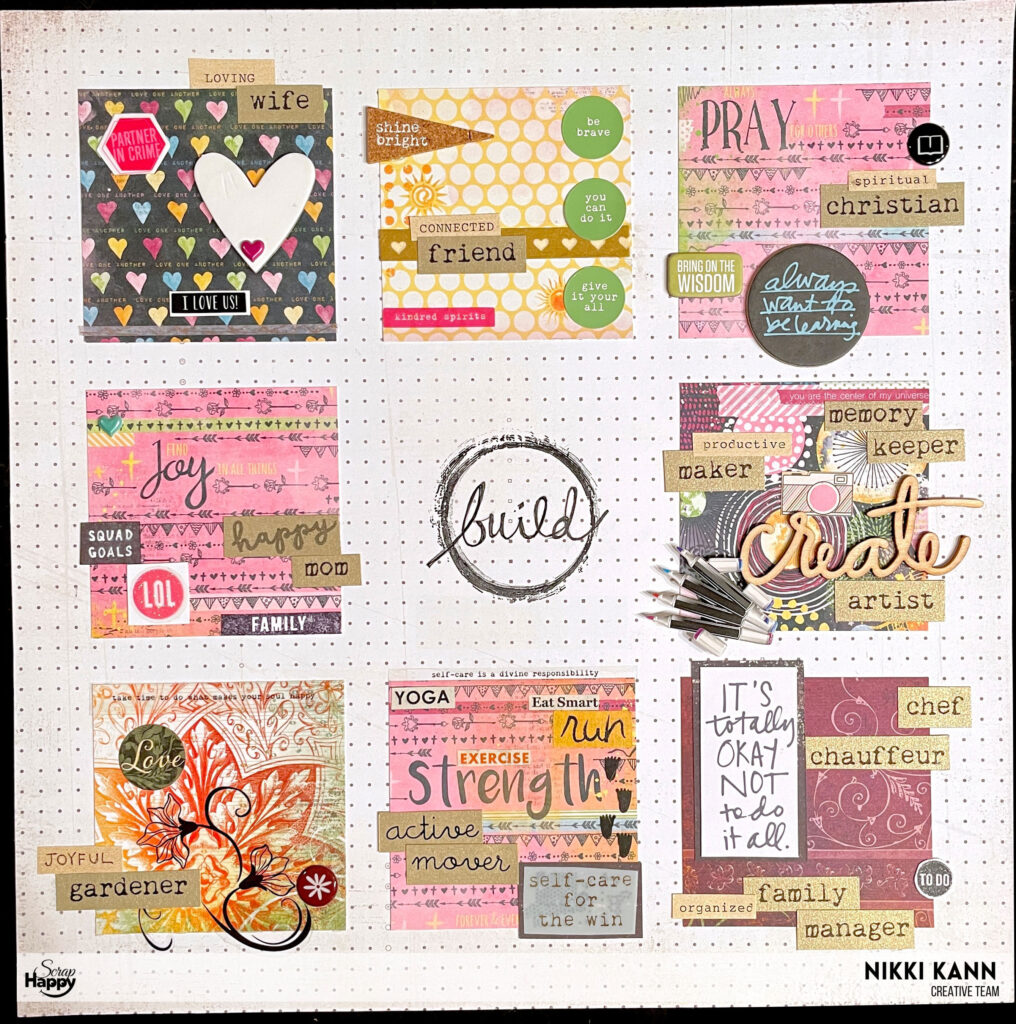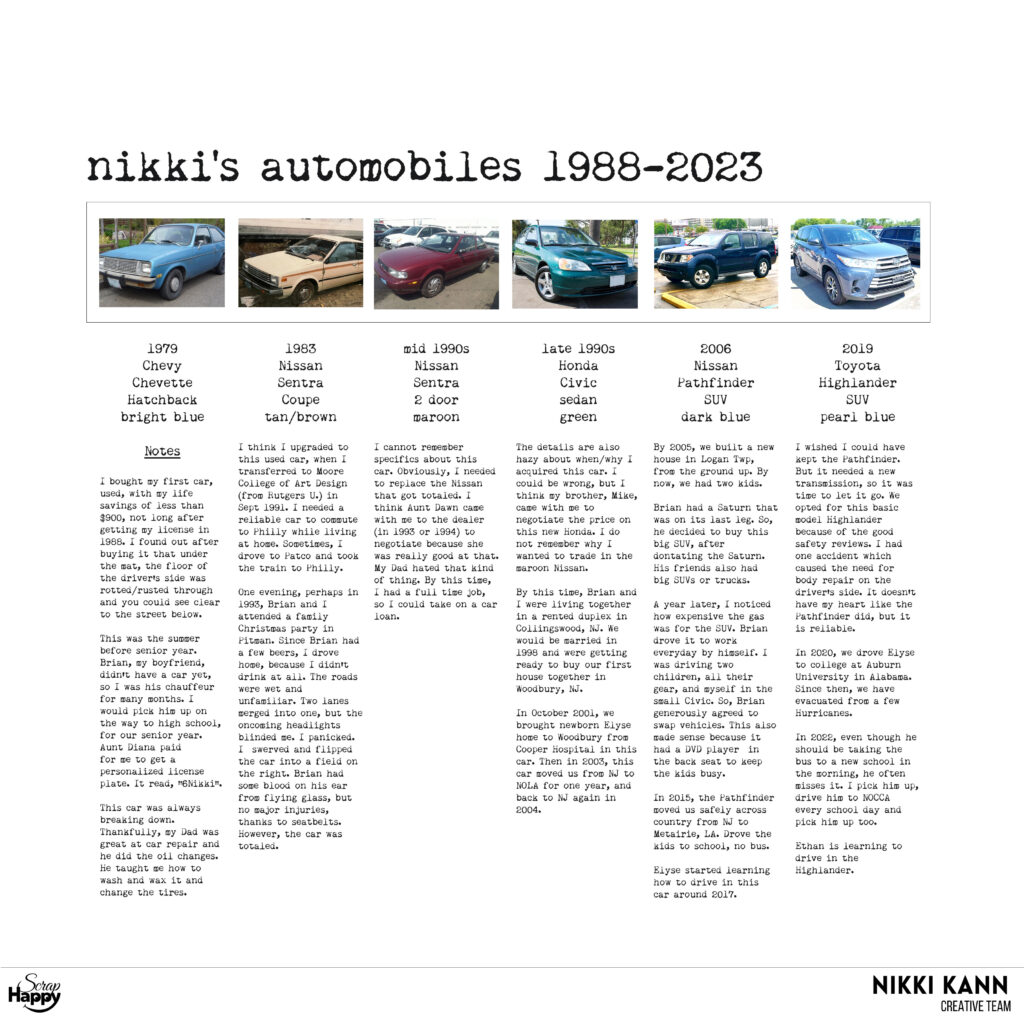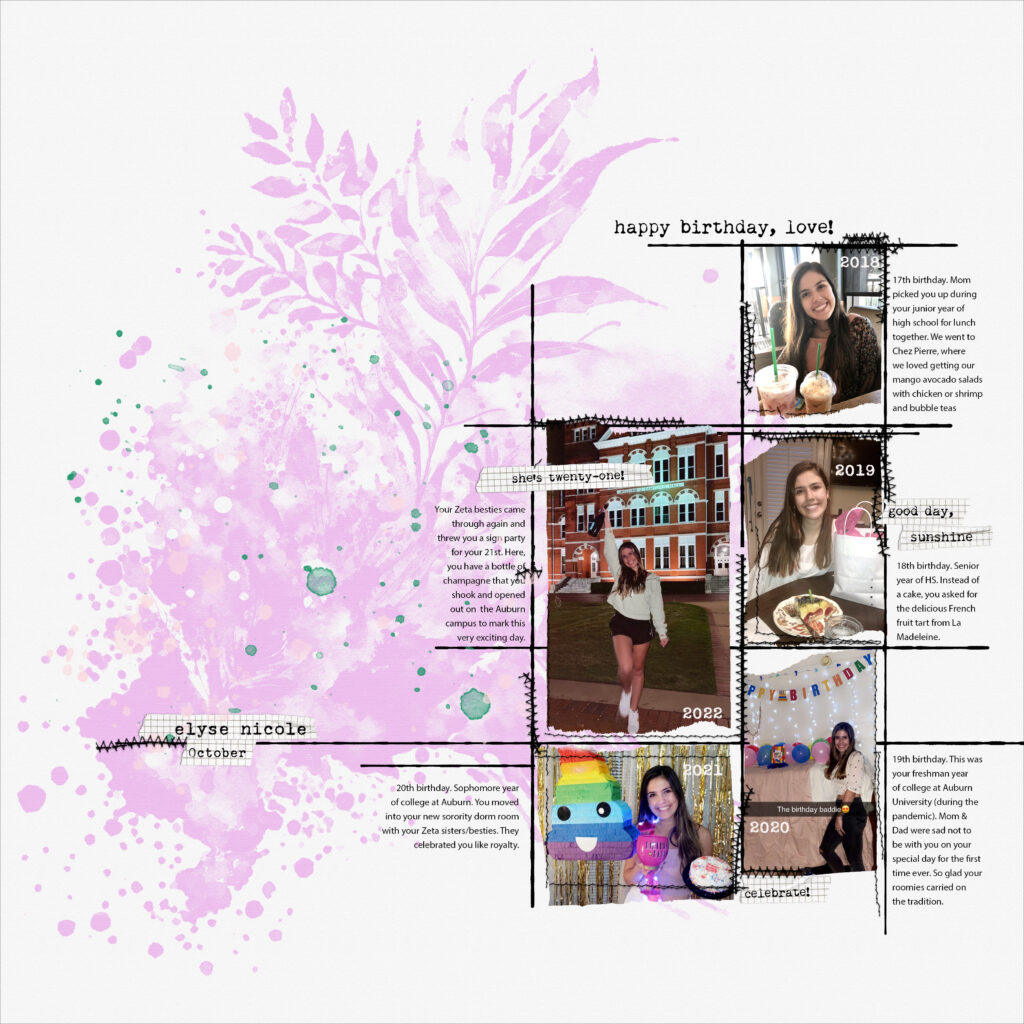When first communicating with the Creative Team about grids as the theme for this month, I did not realize the extent with which grids informed my design process. Others seemed to know this about their work immediately. As I was looking through my stack of recent pages, that have not yet been allocated to albums, my intention was to pull out the layouts with grids to review. There were more examples of grids than layouts without. I’m not sure why I didn’t pay more attention to this detail of my style. But now I am aware!
What exactly is a grid?
It is a structure for organizing information on a layout. In classical design terms, the most basic grids used in scrapbooking are called baseline, column, modular, and hierarchal. While doing research on this, I found it interesting that the first grid was most likely used in ancient manuscripts. Their purpose was as a guideline for the scribes to keep their handwritten words straight and within a confined space. As scrapbookers (and students), we have also used this baseline grid when using ruled paper as a guide for our handwritten journaling.

- Baseline: equally spaced horizontal fields or lines, often used for lengths of handwritten text.
- Column: split into equal vertical fields as in newspapers, books or magazines.
- Modular: vertical fields (columns), intersecting with horizontal fields (rows) which create consistently sized blocks for content. The sizes of the blocks or cells, as a whole, can be increased or decreased to meet design needs or the quantity of content. The addition of gutters and margins to a modular grid pattern provides additional style options. A gutter is the negative space between columns and rows. A margin is the space left between the content and outer edge of the paper (or structure). Both add visual resting space, or white space. (See our blog posts on white space.)
- Hierarchical: freeform or irregular grids with customized cell sizes. This style prioritizes content, as you may see on websites or digital platforms. These grids are more flexible, visually interesting and allow for a personal style or mood to emerge. Important content can be presented in larger fields.
Use a grid as you would a sketch or template.
What I realized after considering how I use grids in my scrapbooking, is that I often will choose a basic grid in the same way that I choose to use a sketch or a template. It is an ideal first tool for scrapbookers to use as a jumping off point in the creative process or to help move past that intimidating blank page. When starting with a grid, it can be followed line by line or block by block, it can be expanded, condensed, or layered.
Keeps groups of content clean & organized.
After viewing my collection of grid layouts, I’ve decided that my favorite grid layouts organize multiple lists/ideas or groups of memories into one cohesive structure. Examples of this are vision boards and timelines. The traditional layout on the left uses a 3×3 modular grid with gutters and margins. It is a vision board. The digital layout (created in Photoshop) on the right uses a column grid and is a timeline.


Rebelling against the traditional grid structure can be fun.
I’ve disregarded the grid on scrapbook pages when preferring whimsy or creative expression. However, I’ve noticed that my instinctive style is to follow some type of grid or guide in the early stage of the process to get ideas flowing and organized. Then, maintaining the option to rebel against it, when inspired, is really exciting. Here is an example of a timeline layout that breaks traditional grid formats, but implements a type of hierarchical grid in an artistic way. For this layout, I altered the template artcrush #59 by NBK-Design. Notice that the photos break the grid borders.

Take a good look at newspapers, books, magazines, programs, brochures, as well as websites, digital platforms or user interfaces. They all generally use some aspect of grid design and are excellent sources of inspiration for scrapbookers. Like sketches or templates, grids are efficient tools to use when planning scrapbook pages. Grids keep the content organized and legible. But don’t stop there, it is also fun to play and go beyond the traditional grid boundaries.
I can’t wait to see how the rest of the Creative Team use grids in their scrapbooking!


